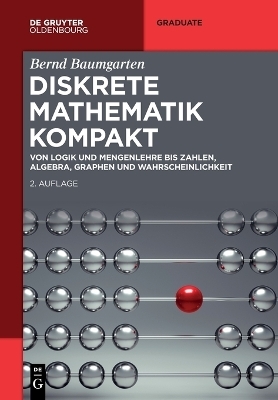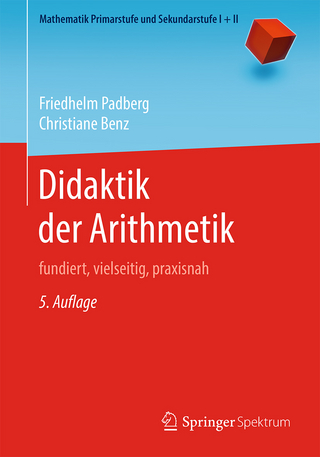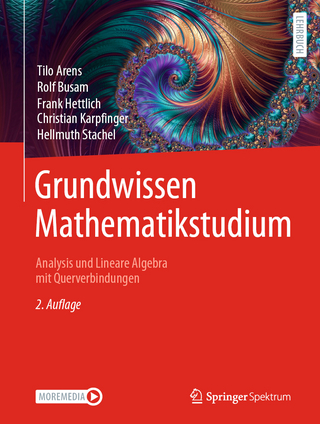
Possibility Theory
Kluwer Academic / Plenum Publishers (Verlag)
978-0-306-42520-2 (ISBN)
- Titel ist leider vergriffen;
keine Neuauflage - Artikel merken
1. Measures of Possibility and Fuzzy Sets.- 1.1. Imprecision and Uncertainty.- 1.2. Traditional Models of Imprecision and Uncertainty.- 1.3. Confidence Measures.- 1.3.1. Measures of Possibility and of Necessity.- 1.3.2. Possibility and Probability.- 1.4. Fuzzy Sets.- 1.5. Elementary Fuzzy Set Operations.- 1.6. Practical Methods for Determining Membership Functions.- 1.6.1. Vague Categories as Perceived by an Individual.- 1.6.2. Fuzzy Sets Constructed from Statistical Data.- 1.6.3. Remarks on the Set of Degrees of Membership.- 1.7. Confidence Measures for a Fuzzy Event.- 1.8. Fuzzy Relations and Cartesian Products of Fuzzy Sets.- References.- 2. The Calculus of Fuzzy Quantities.- 2.1. Definitions and a Fundamental Principle.- 2.1.1. Fuzzy Quantities, Fuzzy Intervals, Fuzzy Numbers.- 2.1.2. The Extension Principle.- 2.2. Calculus of Fuzzy Quantities with Noninteractive Variables.- 2.2.1. Fundamental Result.- 2.2.2. Relation to Interval Analysis.- 2.2.3. Application to Standard Operations.- 2.2.4. The Problem of Equivalent Representations of a Function.- 2.3. Practical Calculation with Fuzzy Intervals.- 2.3.1. Parametric Representation of a Fuzzy Interval.- 2.3.2. Exact Practical Calculation with the Four Arithmetic Operations.- 2.3.3. Approximate Calculation of Functions of Fuzzy Intervals.- 2.4. Further Calculi of Fuzzy Quantities.- 2.4.1. "Pessimistic" Calculus of Fuzzy Quantities with Interactive Variables.- 2.4.2. "Optimistic" Calculus of Fuzzy Quantities with Noninteractive Variables.- 2.5. Illustrative Examples.- 2.5.1. Estimation of Resources in a Budget.- 2.5.2. Calculation of a PERT Analysis with Fuzzy Duration Estimates.- 2.5.3. A Problem in the Control of a Machine Tool.- Appendix: Computer Programs.- References.- 3. The Use of Fuzzy Sets for the Evaluation and Ranking of Objects.- 3.1. A Quantitative Approach to Multiaspect Choice.- 3.1.1. Basic Principles of the Approach.- 3.1.2. Fuzzy Set-Theoretic Operations.- 3.1.3. Application to the Combination of Criteria.- 3.1.4. Identification of Operators.- 3.1.5. Example.- 3.2. Comparison of Imprecise Evaluations.- 3.2.1. Comparison of a Real Number and a Fuzzy Interval.- 3.2.2. Comparison of Two Fuzzy Intervals.- 3.2.3. Ordering of n Fuzzy Intervals.- 3.2.4. Computer Implementation.- 3.2.5. Example.- Appendix: Computer Programs.- References.- 4. Models for Approximate Reasoning in Expert Systems.- 4.1. Remarks on Modeling Imprecision and Uncertainty.- 4.1.1. Credibility and Plausibility.- 4.1.2. Decomposable Measures.- 4.1.3. Vague Propositions.- 4.1.4. Evaluating the Truth Value of a Proposition.- 4.2. Reasoning from Uncertain Premises.- 4.2.1. Deductive Inference with Uncertain Premises.- 4.2.2. Complex Premises.- 4.2.3. Combining Degrees of Uncertainty Relative to the Same Proposition.- 4.3. Inference from Vague or Fuzzy Premises.- 4.3.1. Representation of the Rule "if X is A, then Y is B".- 4.3.2. "Generalized" Modus Ponens.- 4.3.3. Complex Premises.- 4.3.4. Combining Possibility Distributions.- 4.4. Brief Summary of Current Work and Systems.- 4.5. Example.- Appendix A..- Appendix B: Computer Programs.- References.- 5. Heuristic Search in an Imprecise Environment, and Fuzzy Programming.- 5.1. Heuristic Search in an Imprecise Environment.- 5.1.1. A and A* Algorithms.- 5.1.2. The Classical Traveling Salesman Problem (Reminder).- 5.1.3. Heuristic Search with Imprecise Evaluations.- 5.1.4. Heuristic Search with Fuzzy Values.- 5.2. An Example of Fuzzy Programming: Tracing the Execution of an Itinerary Specified in Imprecise Terms.- 5.2.1. Execution and Chaining of Instructions.- 5.2.2. Illustrative Example.- 5.2.3. Problems Arising in Fuzzy Programming.- 5.2.4. Concluding Remarks.- Appendix: Computer Programs.- A.1. Selection of "the Smallest" of N Fuzzy Numbers.- A.2. Tracing Imprecisely Specified Itineraries.- References.- 6. Handling of Incomplete or Uncertain Data and Vague Queries in Database Applications.- 6.1. Representation of Incomplete or Uncertain Data.- 6.1.1. Representing Data by Means of Possibility Distributions.- 6.1.2. Differences and Similarities with Other Fuzzy Approaches.- 6.1.3. Dependencies and Possibilistic Information.- 6.2. The Extended Relational Algebra and the Corresponding Query Language.- 6.2.1. Generalization of ?-Selection.- 6.2.2. Cartesian Product, ?-Join, and Projection.- 6.2.3. Union and Intersection-Redundancy.- 6.2.4. Queries Employing Other Operations.- 6.3. Example.- 6.3.1. Representation of Data.- 6.3.2. Examples of Queries.- 6.4. Conclusion.- Appendix: Computer Program.- A.1. Data Structures.- A.2. Representation of Queries.- A.3. Description of Implemeted Procedures.- References.
| Erscheint lt. Verlag | 29.2.1988 |
|---|---|
| Zusatzinfo | biography |
| Verlagsort | Dordrecht |
| Sprache | englisch |
| Gewicht | 530 g |
| Themenwelt | Mathematik / Informatik ► Mathematik |
| ISBN-10 | 0-306-42520-3 / 0306425203 |
| ISBN-13 | 978-0-306-42520-2 / 9780306425202 |
| Zustand | Neuware |
| Haben Sie eine Frage zum Produkt? |
aus dem Bereich


